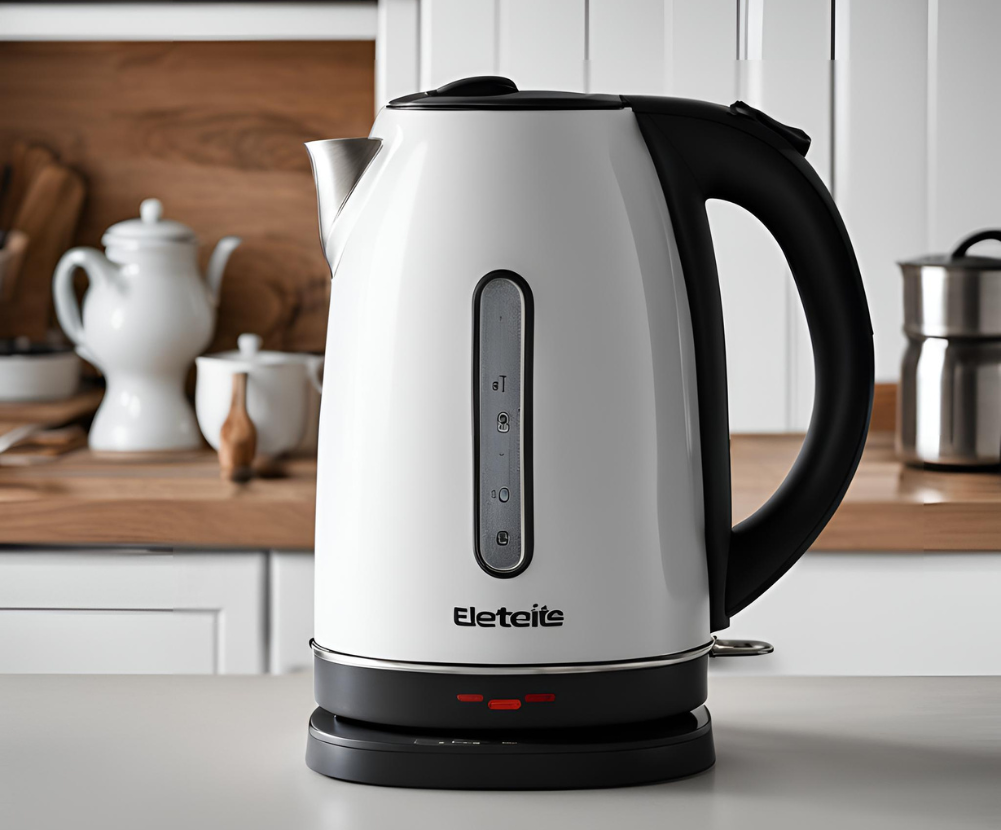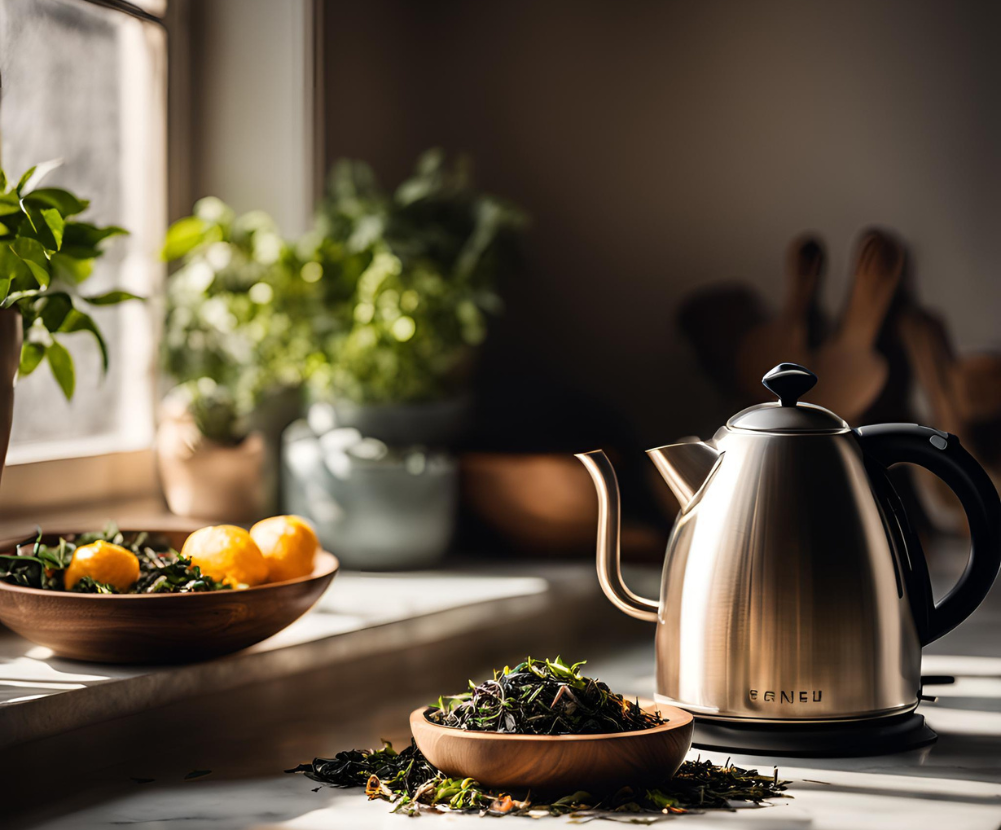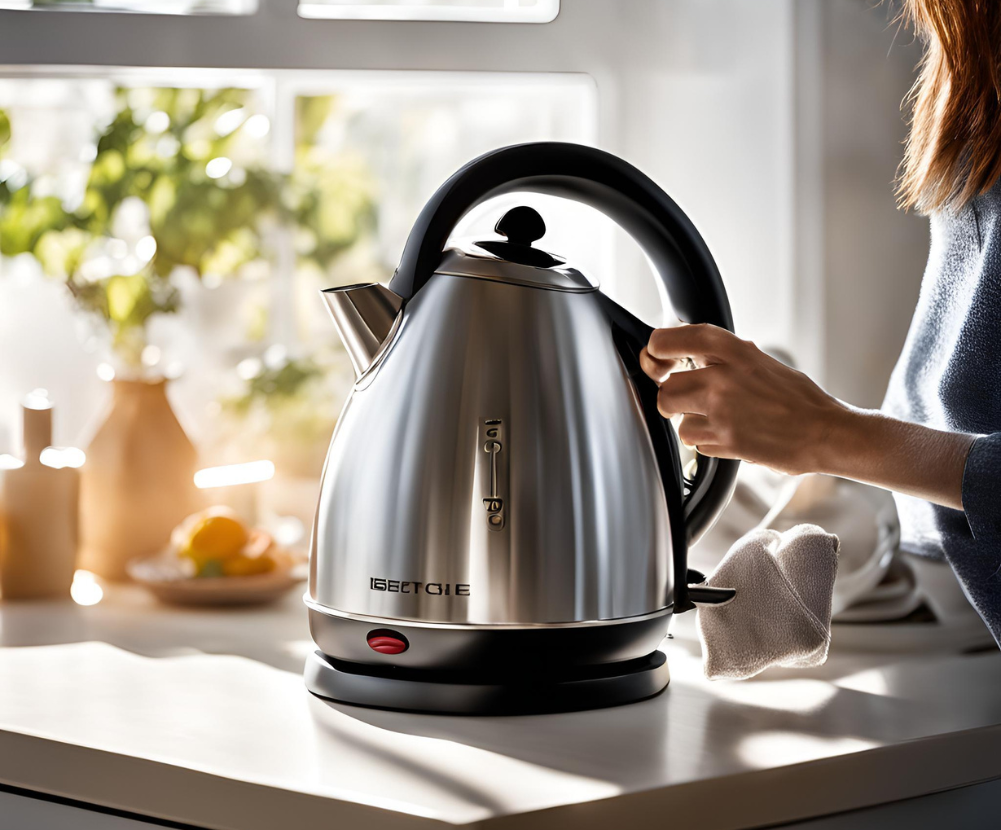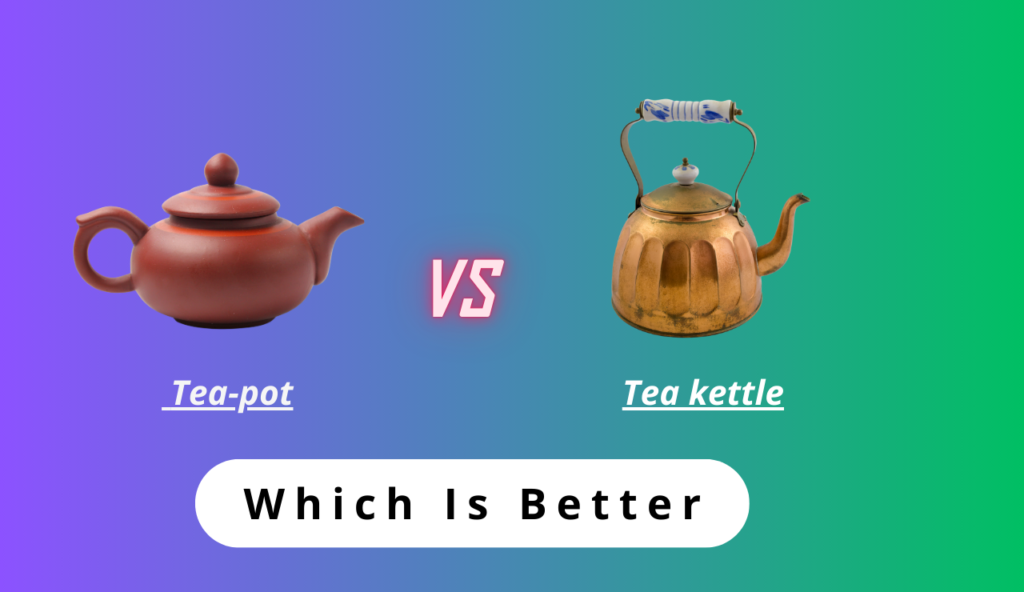In the modern era, it is one of the home appliances that is used to heat water and also to make tea and coffee. Many people have the question, Can you put tea leaves in an electric kettle?
Table of Contents
Can you put tea leaves in an electric kettle?
Not at all. Because of its design, the kettle can only heat liquids. Now, if we add any tea leaves in an electric kettle , they can scatter on the heating element and make it less functional, or they will quickly saturate the kettle and cause it to stop working.
Tea is one of the most popular beverages that can be easily prepared with the help of a kettle, but is putting tea leaves inside the kettle really good for the kettle? This topic is discussed in detail.
How do the kettles work?

- Typically, a kettle is used to heat liquids. The board’s switch is directly linked to the kettle’s plug, and when the switch is activated, energy is delivered to the kettle’s heating element. The electrical energy is immediately transformed into heat there, and the liquid in the kettle begins to heat up as a result of the heat being transmitted. The automatic shut-off mechanism in the kettle automatically shuts it off when the temperature reaches its maximum. After that, the switch is turned off, leaving the kettle’s plug open. Here’s how the kettle functions.
↘️↘️↘️
You can also check other kettle related article👉👉👉 Do kettles use a lot of electricity ?
Why Should You Avoid Adding Tea Leaves?

Damage the kettle:
- The kettle’s heating coil or element is situated at the bottom. If tea leaves stick there, the kettle’s functionality may be decreased, or it may stop working.
Difficulty in cleaning:
- If tea leaves somehow get inside the kettle and stick on the internal parts of the kettle, it is really difficult to clean the kettle.
Thermal cut off:
- Tea leaves in the kettle can totally ruin the thermal power mechanism, which may give rise to a malfunction in the kettle’s temperature control system.
Safety issues:
- Tea leaves in the kettle can completely damage the main part of the kettle, resulting in a fire.
Taste difference:
- If the tea’s solid ingredients are left in the kettle and it isn’t cleaned, the tea’s flavor will be released when any liquid in the kettle is heated.
How to make Indian tea in a tea infuser kettle?
A tea infuser kettle is more useful for preparing tea than an electric kettle. It is specifically made to make tea.
Actions to take:
- First, combine the elements for making tea, including water, sugar, milk, tea leaves, and other ingredients.
- Next, add enough water to the kettle.
- Fill the kettle with the necessary number of tea leaves.
- You will see that the tea is ready after 4 to 6 minutes. Next, add the necessary amount of sugar and milk and mix thoroughly once more.
- After properly filtering the tea leaves, pour the tea into a cup.
How do you clean an electric kettle after making tea?

Steps:
- First unplug the kettle, then open the kettle lid and take out the things inside the kettle. Never immerse the kettle completely in water.
- 2. For soaps, fill the kettle with hot water and soap, mix thoroughly, and then rub the kettle with a moist cloth. After some time has passed, rinse the kettle with water to ensure that no soap flakes remain.
Fill the kettle halfway with water and vinegar solution, then plug it in and switch it on. After a while, switch off the kettle and release the water and vinegar solution. - Then, wipe the kettle well with a dry cloth and allow it to dry. Wash the kettle’s body and the lid separately with soap and dry well. Finally, the kettle is ready to use again. Cleaning the kettle on a regular basis will extend its life.
↘️↘️↘️
If you don't know how to use a kettle then check my this blog👉👉👉How to use an electric kettle for the first time ?What is the difference between a teapot and a tea kettle?

Tea kettles and teapots are devices that make or heat tea. These two products have different purposes, and their designs are similarly different.
- A teapot is commonly used to make and serve tea. These do not directly heat water.
- Teakettles are commonly used in the kitchen directly to heat water, which is then poured into a teapot with tea leaves added to prepare tea.
Price :
- A simple teapot is easily found priced between 500 and 1500 rupees, whereas a quality teapot costs between 3000 and 4000 rupees.
- A midrange tea kettle typically costs between 500 and 3000 rupees, while an expensive tea kettle can cost up to 10,000 rupees.In general, a teapot is less expensive than a tea kettle.
Features:
1. Design:
- Generally, teapots are made of materials such as ceramic and glass, while tea kettles are made of metals such as stainless steel, aluminum, and copper.
2. Uses:
- Teapots are perfect for serving tea at gatherings or for personal usage, while tea kettles are used to heat water in the kitchen. It is not suitable for serving.
3. Heat:
- Teapots cannot take heat directly from a heat source, while tea kettles are connected to a direct heat source to boil water.
4. Cleaning:
- Teapots are typically easy to clean. These are only used to hold for tea; thus they don’t accumulate limescale over time. Tea kettles, on the other hand, can be more difficult to clean if they are used to boil hard water. This hard water creates complex limescale that is harder to get rid of.
Why are tea kettles made of metal?

Metals are commonly used to build tea kettles because they have several qualities that make them both safe and easy to use.
Safety:
- Metals do not react quickly; therefore, even if the water boiled inside the kettle has certain acidic properties, it does not react with the metal, making the water safe to drink.
Durability:
- Tea kettles are often composed of heavy metals such as stainless steel, which can bear mechanical stress and last for an extended period of time.
Cleaning:
- Rough surfaces are difficult to clean, while the inside of the kettle has smooth surfaces, making it easy to clean.
Rust Proof:
- Because stainless steel is generally rust resistant, kettles built of this metal can last a long period without issue.
Environmentally friendly:
- Metals are often resistant to damage, which allows them to be reused, making them environmentally friendly.

